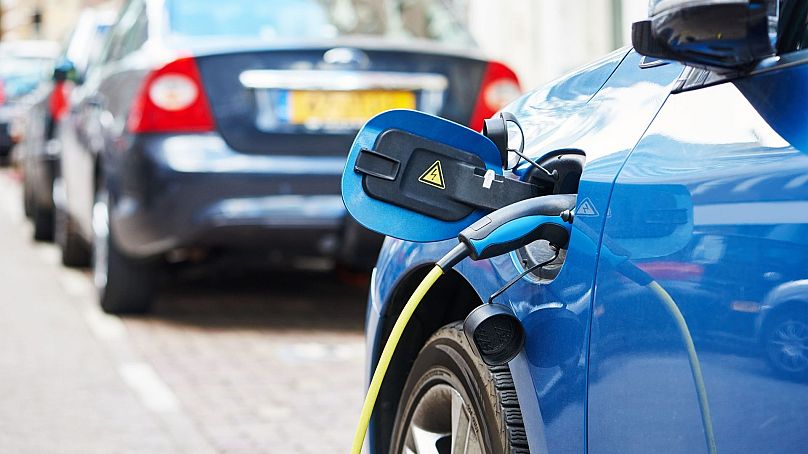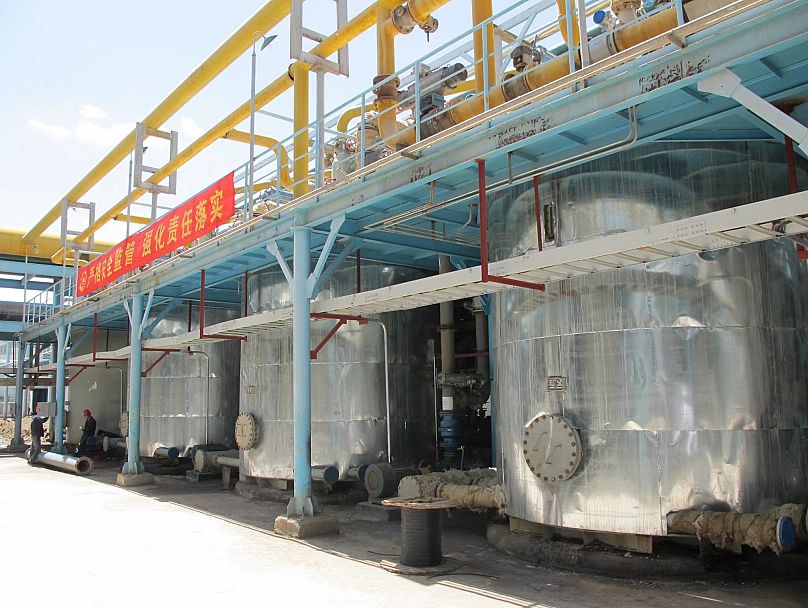A global transition to a low-carbon world means moving away from environmentally harmful lithium extraction and looking at greener solutions.
Teague Egan is the founder and CEO of EnergyX. He is responsible for all aspects of building the company into a world leader in renewable energy technologies. Based in the US, Egan has been investing in public sector energy assets and sustainable technologies for many years and here gives us his take on whether lithium extraction is sustainable.
The global push for green energy and low-carbon transportation solutions has led to a skyrocketing demand for lithium in recent years.
Lithium is the main element in rechargeable batteries for electric vehicles, as well as overall energy storage, and leads us to a world less reliant on the intermittency of renewables. Prices for the battery material have surged in tandem with demand, increasing the pressure on the lithium industry to increase their yields.
1/1
Skip Ad
Continue watching
after the ad
Visit Advertiser websiteGO TO PAGE
PLAY

Latest
Video Settings
Full Screen
About Connatix
V452730

Read More

Read More

Read More

Read More

Read More

Read More

Read More

Read More
Bulgaria and Romania join Schengen: Experts onwhat it will mean for prices, transport & overtourism
 (new Image()).src = ‘https://capi.connatix.com/tr/si?token=604675c4-ea89-46c9-9817-5ed115e7bf41&cid=83b16131-8326-440c-9a78-470bcd2870e2’; cnxps.cmd.push(function () { cnxps({ playerId: “604675c4-ea89-46c9-9817-5ed115e7bf41” }).render(“29572e93412441b3b0dc992bd9167d8a”); });
(new Image()).src = ‘https://capi.connatix.com/tr/si?token=604675c4-ea89-46c9-9817-5ed115e7bf41&cid=83b16131-8326-440c-9a78-470bcd2870e2’; cnxps.cmd.push(function () { cnxps({ playerId: “604675c4-ea89-46c9-9817-5ed115e7bf41” }).render(“29572e93412441b3b0dc992bd9167d8a”); });
However, there is a pressing need to address the lithium extraction process and make it more sustainable. There are currently two main ways of acquiring lithium: mining ore and extraction from an aqueous brine.
What are the issues with lithium extraction?
Mining the source spodumene for lithium is an intensive process requiring heavy machinery, toxic chemicals, and large amounts of water. This process has a direct effect on the local environment as it requires earth removal and the creation of tailing dams for contaminated water.
And even worse, as illustrated by the failures of the Ganzizhou Rongda Lithium mine in Tibet, the cost of an on-site failure can wreak havoc on local ecology. The risks associated with ore mining played a role in the Serbian government revoking Rio Tinto’s lithium mine permit in January, following protests around the country.
The second lithium extraction method, brine extraction, is less geologically intensive but typically requires even larger amounts of water to pump lithium brine from below ground up to the surface, where they are contained in New York city-sized ponds, using chemicals to facilitate the evaporation of water and collection of lithium.
Current methods of extraction are time-consuming and inefficient – up to 70 per cent of lithium present in the brines is lost using this process. Additionally, chemical infiltrations within groundwater and reduced water availability have become synonymous with these operations, as seen in the Salar de Atacama.
Putting the world’s lithium demand in context
The average electric vehicle (EV) needs almost 63 kilos of lithium carbonate for its battery components. When you consider that there were 5.6 million EVs on the road globally in 2020, and 145 million expected by 2030, the sourcing of lithium becomes a major issue – even without considering the energy storage systems needed for renewable energy.
At the United Nations climate conference, COP26, global governments made several commitments on net-zero goals, reducing environmental damage, and creating a low-carbon economy capable of mitigating the impacts of the climate crisis.
Lithium extraction methods are simply not sustainable in their current forms, especially when considering the local socioeconomic impacts that mining can have on local communities.
Implementing low-carbon sustainable solutions should not come at the cost of compromising the environment elsewhere. In order to create a better future, we must focus on providing sustainable alternatives to current issues.
But how does this work with lithium? The element is critical to the development of global net-zero plans and is set to become one of the most valuable resources in the next 10 years – demand must be met!
What are the sustainable lithium solutions?
The world is at a crossroads. Global governments are wanting to shift as rapidly as possible to sustainable economic models without necessarily addressing issues with the materials and supply chains that are critical to the transition.
Luckily, there have been breakthroughs within the lithium field that provide opportunities for sustainable development to start from the extraction process. Direct Lithium Extraction (DLE) has become the go-to brine technology in recent years as researchers seek to reduce the environmental strain that brine extraction can have.
The technology is becoming widely available, with companies like EnergyX and Cornish Lithium showcasing the versatility of DLE technology, and how it can replace current methods.
DLE is more time, cost, and resource efficient while also providing higher lithium yields – up to 90 per cent of lithium recovered from a brine instead of 30 per cent. This technology has a much smaller environmental footprint as it does not use chemicals, heavy equipment, or large water usage. Simply put, it is the future of mining – a future the industry can be proud of.
We need to take advantage of modern tech
In order to reach the position we are in now, science, technology, and engineering have made innumerable breakthroughs. Unfortunately some of these breakthroughs have led to the climate emergency that we are actively trying to mitigate.
However, we cannot truly move towards a sustainable economic model without addressing core environmental issues in industries crucial to the transition.
Tech will continue to make the advancements needed for the global community to pursue the greater good – and we need to ensure that the solutions being developed are used.
















